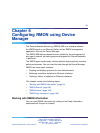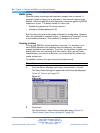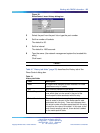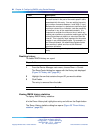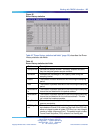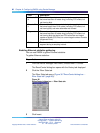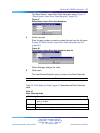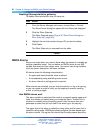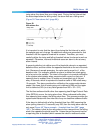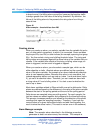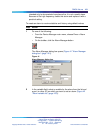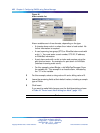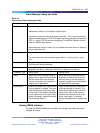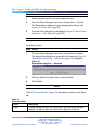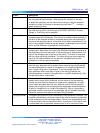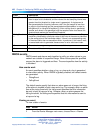
RMON Alarms 99
rising value, the alarm fires as a rising event. During the first interval that
the data drops below the falling value, the alarm fires as a falling event
(Figure 39 "How alarms fire" (page 99)).
Figure 39
How alarms fire
It is important to note that the alarm fires during the first interval in which
the sample goes out of range. No additional events are generated for that
threshold until the opposite threshold is crossed. Therefore, you must
carefully define the rising and falling threshold values for alarms to work as
expected. Otherwise, incorrect thresholds cause an alarm to fire at every
alarm interval.
A general guideline is to define one of the threshold values to an expected,
baseline value, and then define the opposite threshold as the out-of-bounds
limit. Because of sample averaging, the value can be equal to ±1 of the
baseline units. For example, assume an alarm is defined on octets going
out of a port as the variable. The intent of the alarm is to provide notification
to the system administrator when excessive traffic occurs on that port. If
spanning tree is enabled, then 52 octets are transmitted out of the port
every 2 seconds, which is equivalent to baseline traffic of 260 octets every
10 seconds. This alarm provides the notification the system administrator
needs if the lower limit of octets going out is defined at 260 and the upper
limit is defined at 320 (or at any value greater than 260 + 52 = 312).
The first time outbound traffic other than spanning tree Bridge Protocol Data
Units (BPDUs) occurs, the rising alarm fires. When outbound traffic other
than spanning tree ceases, the falling alarm fires. This process provides the
system administrator with time intervals of any non-baseline outbound traffic.
If the alarm is defined with a falling threshold less than 260 (assuming the
alarm polling interval is 10 seconds), say 250, then the rising alarm can fire
only once (Figure 40 "Alarm example -- threshold less than 260" (page
100)). The reason is that for the rising alarm to fire a second time, the falling
alarm (the opposite threshold) must fire. Unless the port becomes inactive
or spanning tree is disabled (which causes the value for outbound octets
Nortel Ethernet Switch 460/470
Configuration — System Monitoring
NN47210-503 01.01 Standard
3.7 22 February 2007
Copyright © 2005-2007, Nortel Networks Nortel Networks Confidential
.



